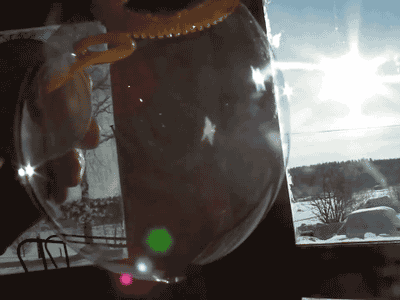What Is A Supermoon Lunar Eclipse?
What is a Supermoon Lunar Eclipse?

We’ve told you that on Sept. 27 a supermoon lunar eclipse will occur in the U.S. And much of the world, but what does that mean?
One important note, is that this event can be referred to in many different ways:
Supermoon Lunar Eclipse
Super Blood Moon
Harvest Moon Eclipse
Supermoon Eclipse
All slightly different names, but apply to the same spectacular event that will occur this weekend.
Since it’s rare that both a supermoon and an lunar eclipse occur at the same time, let’s break it down.
1) Supermoon

A supermoon is a full or new moon that falls closest to the fall equinox, and is at its closest approach to the Earth. This results in the moon appearing up to 14% larger in diameter.
2) Lunar Eclipse

A lunar eclipse occurs when the moon passes directly behind the Earth into its shadow. This can give the moon a red tint.
3) A Supermoon Lunar Eclipse!

The combination of these two events does not happen very often. In fact, since 1900 a supermoon lunar eclipse has only happened 5 times! The last time this occurred was 1982, and if you miss the event this year, your next opportunity won’t come until 2033.
This year, the event will be visible from the Americas, Europe and Africa on the night of Sept. 27. Here’s a full schedule of the supermoon eclipse:

If it’s cloudy in your area on Sept. 27, don’t worry! NASA Television will be providing a live stream of the event, so you can tune in and enjoy the show.
For more information and resources on the supermoon lunar eclipse, visit our page on NASA.gov.
Make sure to follow us on Tumblr for your regular dose of space: http://nasa.tumblr.com
More Posts from Smartler and Others
Only on tumblr

What is a "nebula"?
A nebula is a large cloud of dust and gas that are star-forming regions. They’re formed when a star dies and its outer layers expand, creating a colourful cloud of gas. In other cases, they’re formed when a star goes supernova (when a really big and bright star dies and explodes).
There are emission nebulae, reflection nebulae and dark nebulae. Emission nebulae are close enough to a star that the gas particles absorb the UV light, get excited and emit their own light. Reflection nebulae are when a nebulae isn’t close enough to a star to absorb it’s UV light so it just reflects it. Dark nebulae aren’t close enough to a star to either absorb it’s light nor reflect it. The only way a dark nebulae is visible is if there’s a star behind it that can act as a backdrop, illuminating the back of the nebulae.
Shine bright like a blood strain
Net-The-Average-Boy (via not-the-average-boy)
Net the average boy?

As a single woman, when I see a man
funny tumblr [via imgur]


Street art by SAM3, an artist that paints big as well as small shadows and silhouettes in his urban surroundings.



Scientists have solved a longstanding mystery about how some fish seem to disappear from predators in the open waters of the ocean, a discovery that could help materials scientists and military technologists create more effective methods of ocean camouflage.
In a paper published this week in Science, a team led by researchers at The University of Texas at Austin reports that certain fish use microscopic structures called platelets in their skin cells to reflect polarized light, which allows the fish to seemingly disappear from their predators.
Polarized light is made up of light waves all traveling in the same plane, such as the bright glare you sometimes see when sunlight reflects off the surface of water.
Under the surface of the water, light tends to be polarized. Many fish—and sophisticated modern satellites—have the ability to detect variations in such polarized light.
“Fish have evolved the means to detect polarized light,” said Molly Cummings, professor of integrative biology in the College of Natural Sciences. “Given that, we suggested they’ve probably evolved the means to hide in polarized light. If we can identify that process, then we can improve upon our own camouflage technology for that environment.”
Whether it’s a predator pursuing a fish or a satellite seeking an adversary, light patterns help with detection of targets in the the open ocean in three ways: through brightness contrast, color contrast and polarization contrast. Of the three, polarization contrast is considered most effective for detection in the open ocean.
Continue Reading.
So cool. The vastness of our solar system put into perspective.
-
 sweetbutterbliss liked this · 2 months ago
sweetbutterbliss liked this · 2 months ago -
 metanoiastudies liked this · 1 year ago
metanoiastudies liked this · 1 year ago -
 giletoocerhi liked this · 1 year ago
giletoocerhi liked this · 1 year ago -
 myster78 liked this · 2 years ago
myster78 liked this · 2 years ago -
 iwillhaveamoonbase liked this · 2 years ago
iwillhaveamoonbase liked this · 2 years ago -
 happythebluecat liked this · 2 years ago
happythebluecat liked this · 2 years ago -
 signetringsandpreppythings liked this · 2 years ago
signetringsandpreppythings liked this · 2 years ago -
 glitch-core liked this · 2 years ago
glitch-core liked this · 2 years ago -
 twoampostman liked this · 2 years ago
twoampostman liked this · 2 years ago -
 jeffreybrosseau liked this · 3 years ago
jeffreybrosseau liked this · 3 years ago -
 darthschabba reblogged this · 3 years ago
darthschabba reblogged this · 3 years ago -
 darthschabba liked this · 3 years ago
darthschabba liked this · 3 years ago -
 fanshipper1412 liked this · 3 years ago
fanshipper1412 liked this · 3 years ago -
 lookalivesunshyn liked this · 4 years ago
lookalivesunshyn liked this · 4 years ago -
 artifexjay liked this · 4 years ago
artifexjay liked this · 4 years ago -
 thomasbrisenio liked this · 5 years ago
thomasbrisenio liked this · 5 years ago -
 rnindexplosion reblogged this · 5 years ago
rnindexplosion reblogged this · 5 years ago -
 skullvis liked this · 5 years ago
skullvis liked this · 5 years ago